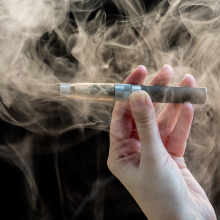In this article, we briefly remind you what conduction, convection and hybrid heating are, and discuss their main advantages and disadvantages. Above all, however, we focus on what type of heating will be best for the specific needs of users. If you are thinking about choosing a portable vaporizer to be sure to read the article below. From the vape shops you can find the best options now.
A person making their first steps in the world of vaporization may be somewhat lost not only because of the number of vaporizers available on the market but also because of the multitude of terms associated with them. Let’s start with the basics: what is conduction, convection and hybrid heating? What are the most important differences between them?
Convection, conduction, hybrid: what are they about and how do they differ?
The conduction consists in heating the dried material through direct contact with a hot surface, in the case of vaporizers they are usually the walls of the heating chamber. For better visualization, conduction heating can be compared to heating something in a pot the hot bottom of the pot will transfer heat to its contents.
For heat to be effectively and evenly distributed inside the condenser vaporizer chamber, it must be tightly filled with plant material. Vaporization will be most effective if the dried material is ground very finely then it will have the largest contact area with the hot walls of the chamber, which will translate into its more effective use.
Convection consists in heating the dried material by passing a stream of hot air through it. Sticking to kitchen metaphors, convection could be compared to baking in an oven with hot air the dish has no direct contact with the heater, but only with the air heated by it.
In the case of convective heating of the dried material, strong compaction of the material in the chamber will not only be helpful, but it will even hinder effective heating of the dried material because the air will not be able to flow freely through the chamber.
In the case of convective heating, very fine grinding of the dried material is also not recommended its particles can then be entrained by the air stream and clog the mouthpiece or even hit the user’s mouth.
Hybrid heating, in turn, is a combination of convection and conduction, with the proportion of convection to conduction varies depending on the vaporizer model. The drought is heated both by the walls of the heating chamber and by the hot air passed through it. This solution has a number of advantages, as discussed below.

Conduction: what situations will work best?
Conduction vaporizers are almost always session-type devices the entire contents of the chamber must be used in one inhalation.
Conductive models heat the drought all the time (also between successive inhalations of steam) and are therefore slightly less economical.
They are great for inhalation in a larger group or for novice users because the technique of using this type of model is usually very simple just slowly and even puff. The great advantage of conduction is the low power consumption therefore conductive models can usually work very long on one charge. The financial aspect is also significant from the technological side, the conduction devices are the least complicated, thanks to which their prices are usually lower than in the case of convection or hybrid models.
